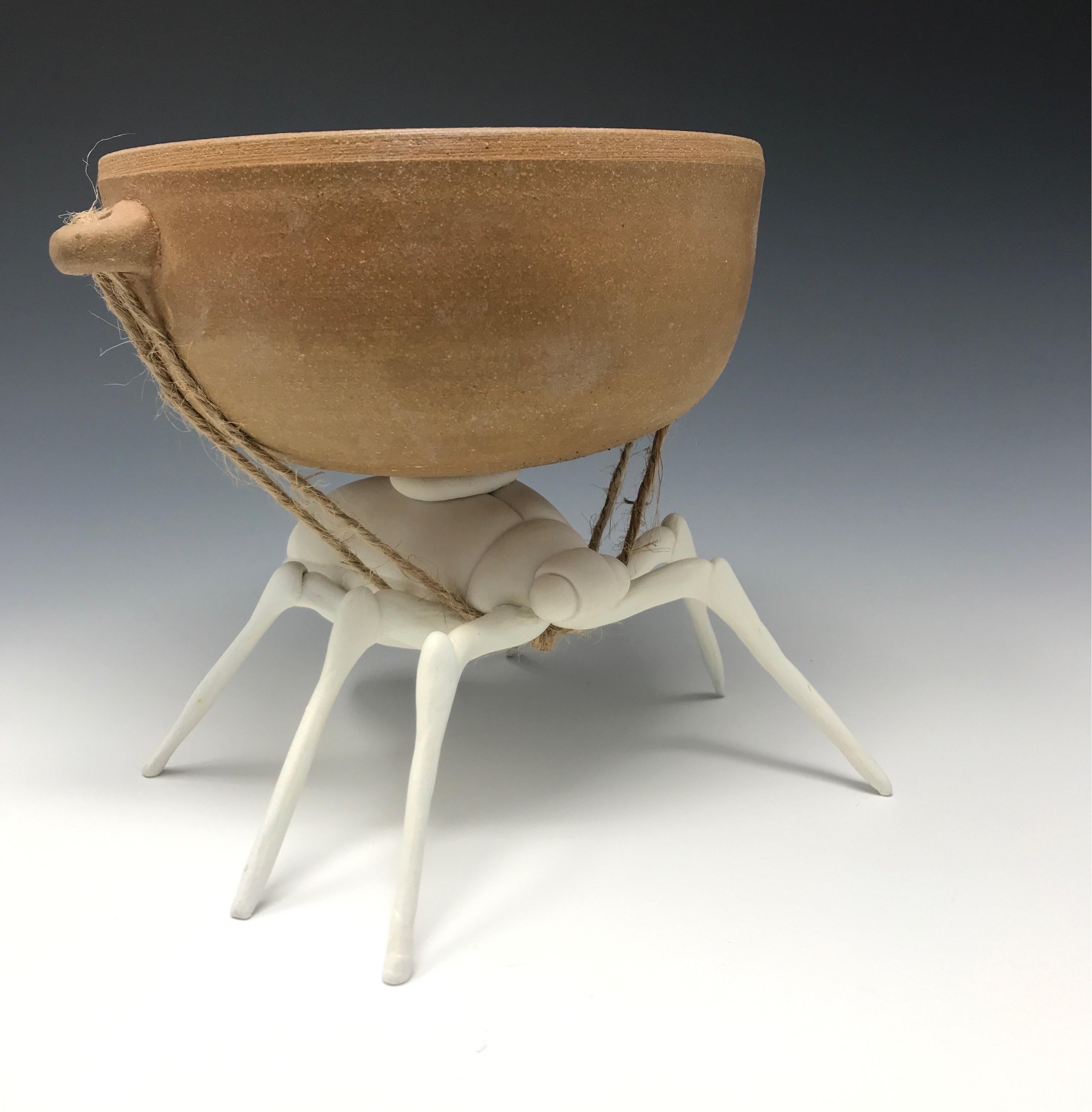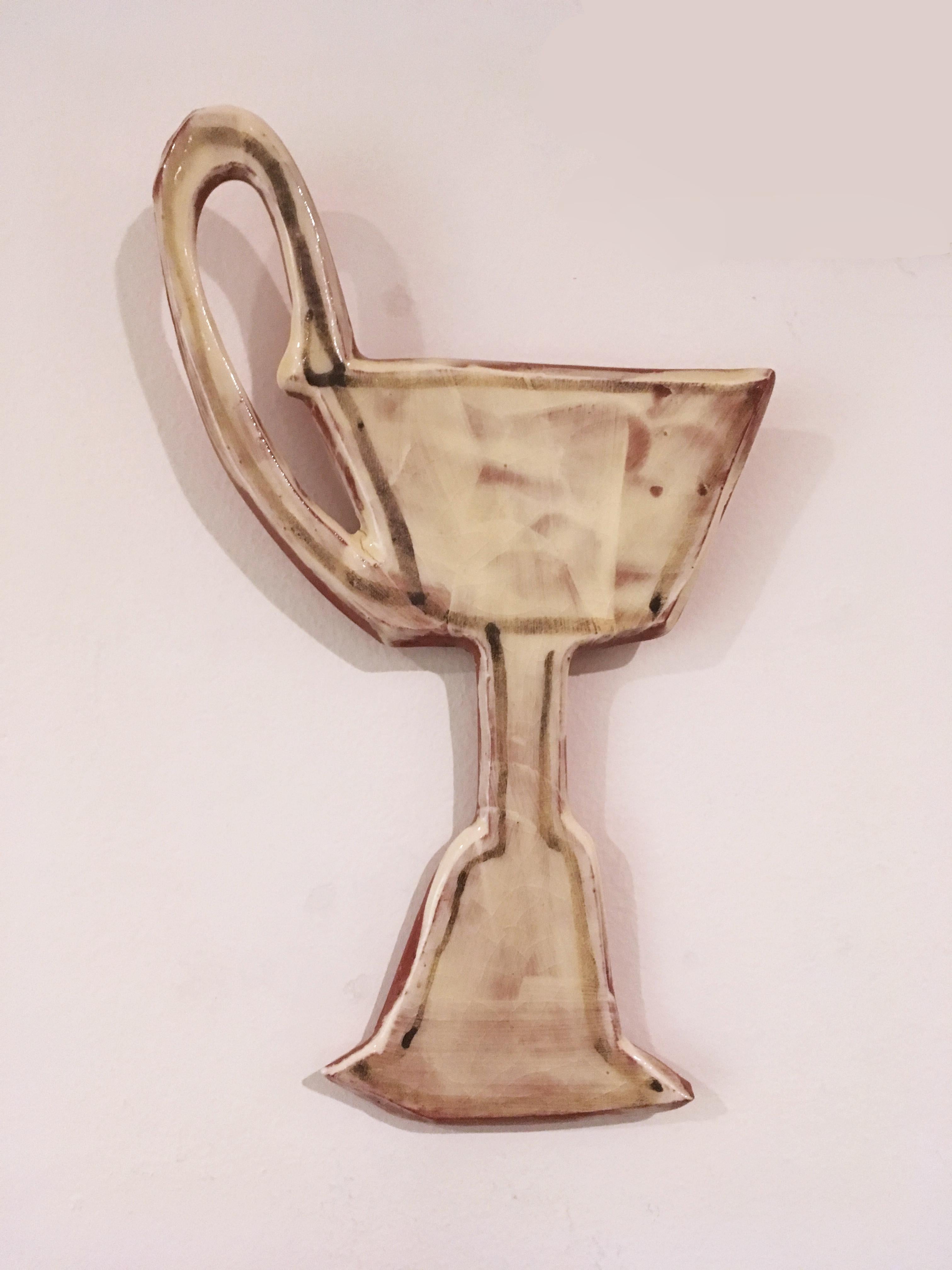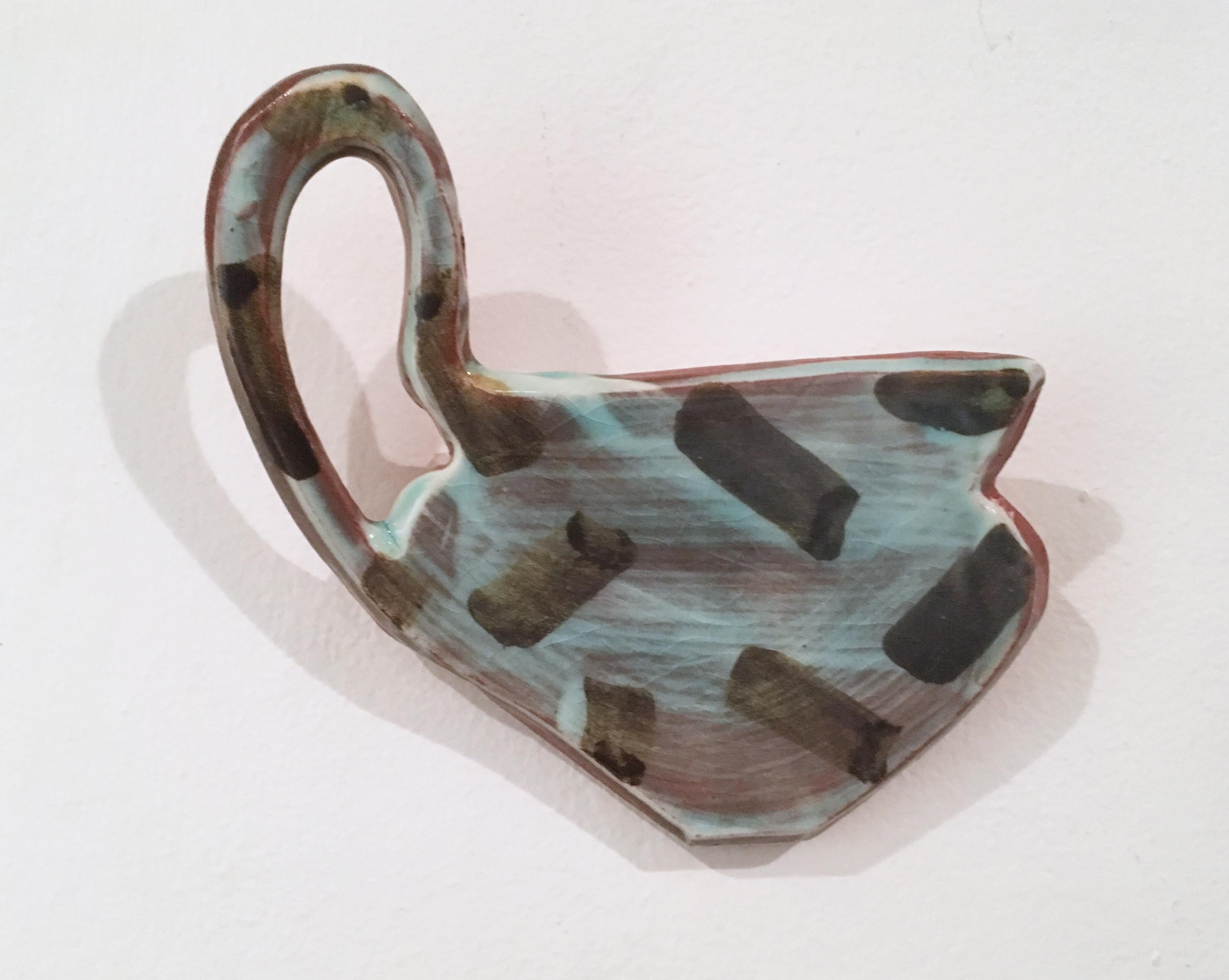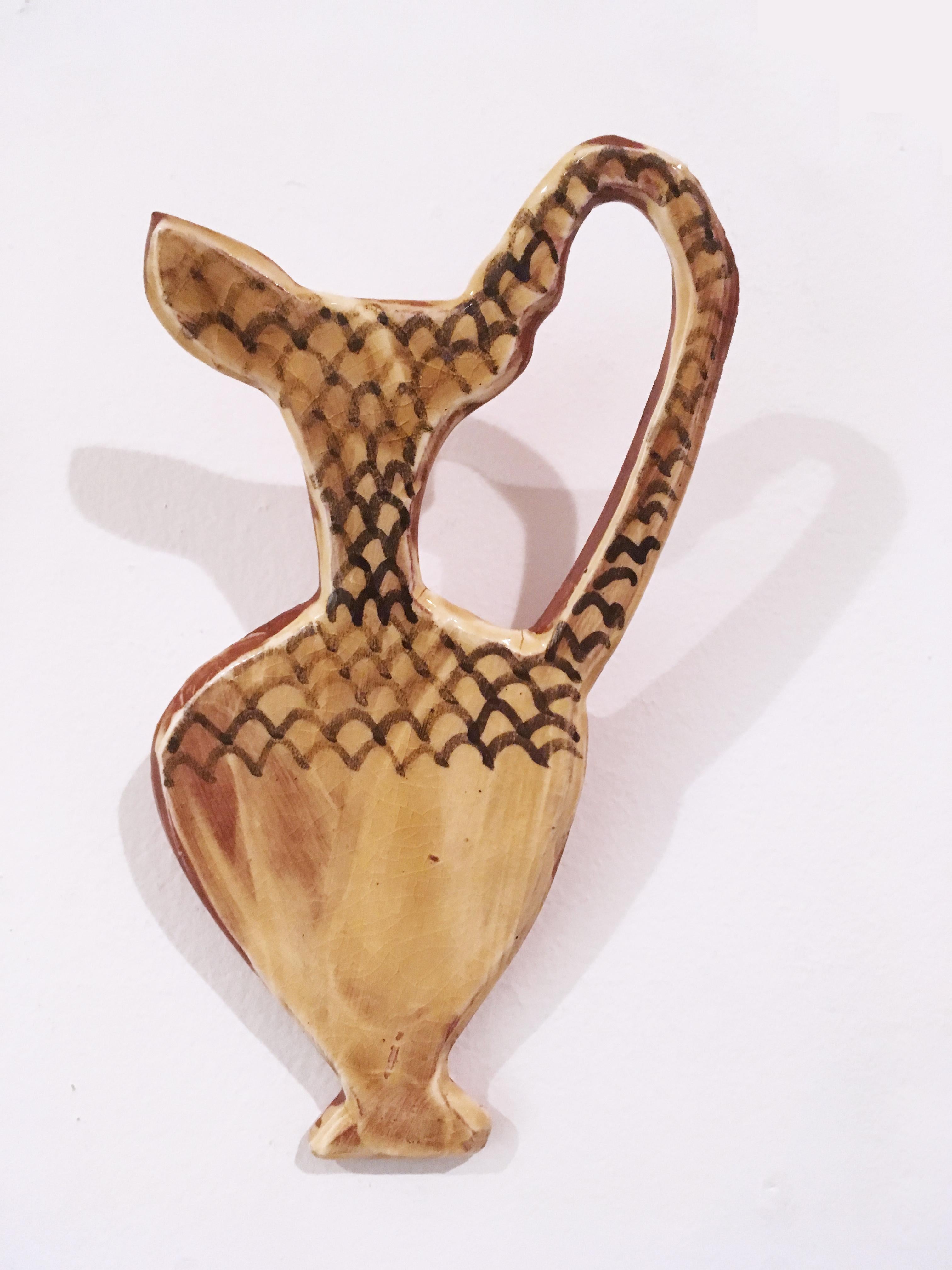Items Similar to Lambeth Plate, English Delftware, Blue and White Design c. 1750
Want more images or videos?
Request additional images or videos from the seller
1 of 2
18th Century English SchoolLambeth Plate, English Delftware, Blue and White Design c. 1750c.1755
c.1755
About the Item
English Delftware blue and white plate, painted with a flower and bird design
Diameter: 8 3/4 inches (22.25 cm)
Delftware is also known as Delft Blue, was originally a general term for blue and white pottery made in the city of Delft in the Netherlands.
The piece has suffered a couple of cracks but these have been professionally restored.
English Delftware in a tin-glazed pottery made in the British Isles between about 1550 and the late 18th century. The main centres of production were London, Bristol and Liverpool. Large decorative dishes, such as this, were often called chargers are were popular. As illustrated here, they included the most ambitious painting, often stretching the artists to the edge of their capabilities.
- Creator:18th Century English School (English)
- Creation Year:c.1755
- Dimensions:Height: 8.75 in (22.23 cm)Width: 8.75 in (22.23 cm)
- Medium:Delft,Ceramic
- Period:1750-1759
- Condition:
- Gallery Location:London, GB
- Reference Number:1stDibs: LU52413662802
About the Seller
5.0
Vetted Seller
These experienced sellers undergo a comprehensive evaluation by our team of in-house experts.
Established in 2007
1stDibs seller since 2014
63 sales on 1stDibs
Typical response time: 4 hours
- ShippingRetrieving quote...Ships From: London, United Kingdom
- Return PolicyA return for this item may be initiated within 14 days of delivery.
More From This SellerView All
- Bust of Frederick William Walker, 19th Century Figurative SculptureLocated in London, GBHope-Pinker was born in Peckham, Surrey, the son of a stonemason and builder employing 5 or 6 men c.1871 in Hove, Sussex, who seems to have taught his son much of his stone-carving skills, although he also attended the Royal Academy Schools (c.1871). Hope-Pinker typically carved without a model from drawings. The bulk of his work was portrait sculpture and John Hunter...Category
19th Century English School Figurative Sculptures
MaterialsBronze
- Nude Statue, 20th Century Carved OakLocated in London, GBCarved Oak, 20th Century European School Nude Statue Height: 21 3/4 inchesCategory
20th Century Modern Figurative Sculptures
MaterialsOak
- Hand Carved Wooden Frame, 16th Century European SchoolLocated in London, GBHand Carved Fruit Wood Length: 16 inches (40.5 inches) A striking, richly hand carved frame in high relief. It shows a rich decor of natural organic forms alongside a collection of ...Category
16th Century Figurative Sculptures
MaterialsWood
- Wooden Maquette of a Leg, Hand Carved British SculptureLocated in London, GBHand-carved wooden trunk and plinth Height: 38 1/2 inches (98 cm) Width: 10 1/2 inches (27 cm) Lawson Rudge Lawson Rudge was born in 1936. He is...Category
20th Century Realist Figurative Sculptures
MaterialsWood
- Reclining Figure Carved Marble Early 20th Century FranceLocated in London, GBCircle of Henri-Gaudier-Breska 1891-1915 Reclining Figure Carved marble Height 5 inches Born Henri Alphonse Séraphin Marie Gaudier near Orléans in France, Gaudier-Brzeska started using his hyphenated name in 1910 when he met the Polish writer Sophie Brzeska. They moved to London together in January 1911 and adopted their new names and the identity of brother and sister in order to make their cohabitation respectable. Gaudier-Brzeska started to establish himself as a sculptor in 1912. Initially influenced heavily by Rodin, he later assimilated more influences from the modernist movement of cubism and from examples of non-European art he saw in London’s museums. He met the sculptor Jacob Epstein in June 1912, who further encouraged him to break with classical Greek tradition. While working from 25 Winthorpe Road in 1913–14, Gaudier-Brzeska became increasingly involved in London’s avant-garde art scene. He exhibited at the London Salon in July 1913, where he met the poet and arts patron Ezra Pound. Pound described Brzeska as ‘like a well-made young wolf or some soft-moving, bright-eyed wild thing’. Gaudier-Brzeska subsequently became associated with the vorticist movement led by Wyndham Lewis, contributing two important articles to Lewis’s magazine Blast and signing his name against the vorticist manifesto. He was also a founding member of the London Group, which formed when the all-male Camden Arts Group joined with independent artists to challenge the dominance of the Royal Academy of Arts. Other founding members included Walter Sickert, Robert Bevan and Spencer Gore...Category
Early 20th Century Figurative Sculptures
MaterialsMarble
- Bronze Head of a Young Boy, Early 20th Century English SculptureLocated in London, GBEnglish School Early 20th Century Head of a Young Boy Bronze with stone base Height: 12 3/4 inches (32.5 cm)Category
Early 20th Century Figurative Sculptures
MaterialsStone, Bronze
You May Also Like
- Porcelain and Earthenware "Bowl-back Beetle" by Bethany KrullBy Bethany KrullLocated in Buffalo, NYThis hand built porcelain beetle with resilient wire and epoxy clay legs hauling a wheel-thrown earthenware bowl was created by New York artist, Betha...Category
2010s Contemporary Figurative Sculptures
MaterialsWire
- Flat Pot XVIII, 2019, Glazed earthenware wall sculpture cream & brown terracottaLocated in Jersey City, NJEarthenware and glaze "Flat Pot XVIII" (2019) Glazed earthenware flat goblet wall sculpture Hanging system on back side Earth tones, cream and brown on terracotta clay Certificate o...Category
21st Century and Contemporary Contemporary Still-life Sculptures
MaterialsEarthenware, Glaze, Terracotta
- Flat Pot XVI, 2019, Glazed earthenware wall sculpture, terracotta clay pastelLocated in Jersey City, NJ"Flat Pot XVI" (2019) Glazed earthenware flat vessel shaped wall sculpture Hanging system on back side Pastel tones, light minty sea foam green blue on te...Category
21st Century and Contemporary Contemporary Still-life Sculptures
MaterialsEarthenware, Glaze, Terracotta
- Flat Pot I, 2019, Glazed earthenware wall sculpture, flat tea cup, terracottaLocated in Jersey City, NJ"Flat Pot I" (2019) Glazed earthenware flat tea cup wall sculpture Hanging system on back side Earth tones and pastels, light blue with deep green on terracotta clay Certificate of ...Category
21st Century and Contemporary Contemporary Still-life Sculptures
MaterialsEarthenware, Terracotta, Glaze
- Flat Pot XIII, 2019, Glazed earthenware wall sculpture pitcher shape terracottaLocated in Jersey City, NJ"Flat Pot XIII" (2019) Glazed earthenware flat pitcher wall sculpture Hanging system on back side Earth tones and pastels, cream, beige, green, sea foam, light blue on terracotta cl...Category
21st Century and Contemporary Contemporary Still-life Sculptures
MaterialsTerracotta, Earthenware, Glaze
- Flat Pot VI, 2019, Glazed earthenware wall sculpture, flat pitcher, earth tonesLocated in Jersey City, NJ"Flat Pot VI" (2019) Glazed earthenware flat pitcher wall sculpture Hanging system on back side Earth tones, brown and beige design on terracotta clay Certificate of authenticityCategory
21st Century and Contemporary Contemporary Still-life Sculptures
MaterialsEarthenware, Glaze, Terracotta





